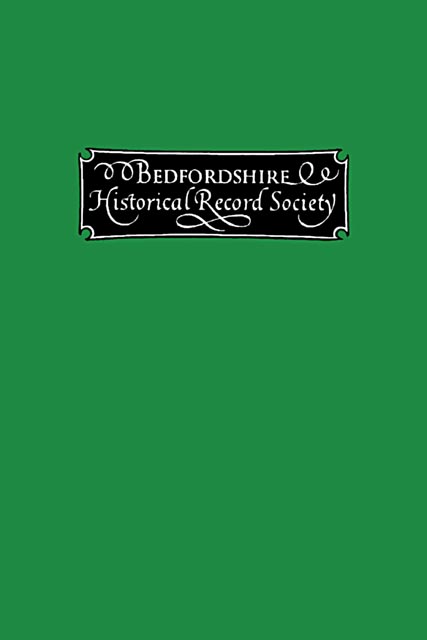Book contents
- Frontmatter
- Contents
- Rules for Transcription
- Abbreviations
- In Memoriam W.A.
- A Calendar of The Feet of Fines for Bedfordshire. Part III.
- Belverge of Sharpenhoe
- The Meeting Plages of Stodden and Redbournstoke Hundreds
- The Writer of The Warrant for The Arrest of John Bunyan
- Bedfordshire Bells, c. 1710
- Note on The Name Helder
- Index Rerum
- Index Nominum
The Writer of The Warrant for The Arrest of John Bunyan
Published online by Cambridge University Press: 14 July 2023
- Frontmatter
- Contents
- Rules for Transcription
- Abbreviations
- In Memoriam W.A.
- A Calendar of The Feet of Fines for Bedfordshire. Part III.
- Belverge of Sharpenhoe
- The Meeting Plages of Stodden and Redbournstoke Hundreds
- The Writer of The Warrant for The Arrest of John Bunyan
- Bedfordshire Bells, c. 1710
- Note on The Name Helder
- Index Rerum
- Index Nominum
Summary
Having recently had recourse to the Act Books of the Archdeacon of Bedford's Court, I observed that the somewhat characteristic handwriting of the three volumes covering the period 1668 to 1680 bore a remarkable similarity to that of the Warrant for Bunyan's arrest; and a detailed comparison left no doubt whatever as to their identity, especially after examination of the minutes of the court held 1 Mar. 1674/5, three days before the date of the Warrant. Further, I believe that I have been able also to ascertain the name of the scribe who engrossed this historical document. The record of the proceedings of each Court from 1674 to 1680 opens with a note of the date and place of the session, concluding with “in the presence of me William Johnson Notary Public and Deputy Registrar.” The actual signature William Johnson, unlike the other matter, is always written in a cursive italic script. That Johnson was responsible for both hands is extremely probable, because (a) this italic hand was at this period often reserved for the signature only; (b) apart from its use for the signature, it occurs in no single instance elsewhere in the volumes referred to; (c) it is quite clear that no arbitrary space was left by another scribe (assuming that some other person wrote the minutes) for the subsequent insertion by Johnson of his signature, because it always fits in exactly between the wTords ‘of me’ and ‘Notary’ on each side; (d) the signature is never written in a different ink from the rest of the proceedings. The interesting fact thus apparently established is that the Warrant was drawn up under ecclesiastical, as opposed to lay, direction. Mr. W. G. Thorpe, a former possessor of the Warrant, was of the opinion that it was prepared by Cobb, the Clerk of the Peace. Dr. Brown, however, in the preface to the third edition of his “Life of Bunyan” was inclined to the view that it was prepared by one of Dr. Foster's clerks, and his idea is now verified. As is well known, Dr. Foster, in his capacity of Commissary and Official, was the judge of the Archdeacon's Court, and also one of the signatories of the Warrant.
- Type
- Chapter
- Information
- Publisher: Boydell & BrewerFirst published in: 2023



